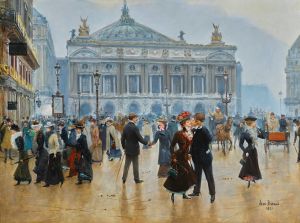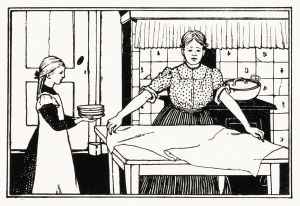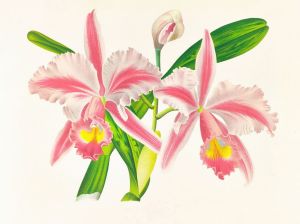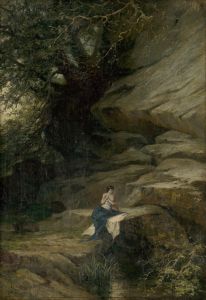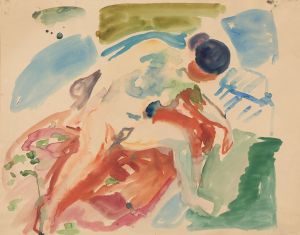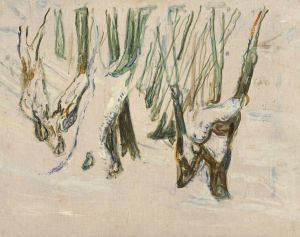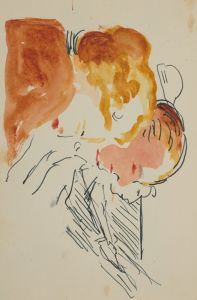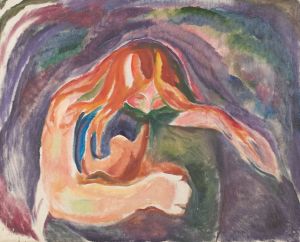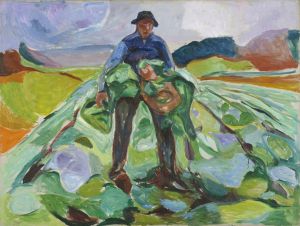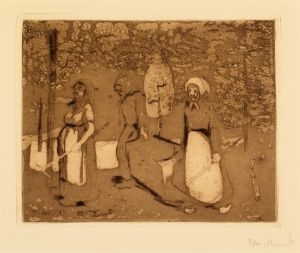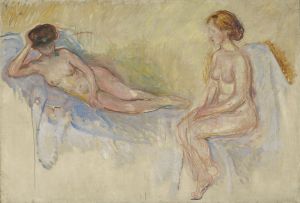
Two Women in the Garden
A hand-painted replica of Edvard Munch’s masterpiece Two Women in the Garden, meticulously crafted by professional artists to capture the true essence of the original. Each piece is created with museum-quality canvas and rare mineral pigments, carefully painted by experienced artists with delicate brushstrokes and rich, layered colors to perfectly recreate the texture of the original artwork. Unlike machine-printed reproductions, this hand-painted version brings the painting to life, infused with the artist’s emotions and skill in every stroke. Whether for personal collection or home decoration, it instantly elevates the artistic atmosphere of any space.
"Two Women in the Garden" is a painting by the renowned Norwegian artist Edvard Munch, who is best known for his iconic work "The Scream." Munch was a pivotal figure in the Symbolist and Expressionist movements, and his work often explored themes of existential dread, love, and human psychology.
"Two Women in the Garden" is part of Munch's extensive body of work that frequently depicted women and nature, reflecting his interest in the complex dynamics of human relationships and the natural world. The painting showcases Munch's distinctive style, characterized by bold colors, expressive brushwork, and a focus on emotional content.
The painting features two women situated in a garden setting, a motif that Munch revisited in various forms throughout his career. The garden, often a symbol of fertility and life, contrasts with the introspective and sometimes melancholic expressions of the figures, a common juxtaposition in Munch's work. This interplay between setting and subject matter is indicative of Munch's ability to convey deep psychological states through visual art.
Munch's use of color in "Two Women in the Garden" is particularly noteworthy. His palette often included vibrant and contrasting hues, which he used to evoke mood and emotion. The colors in this painting may reflect the emotional tension or harmony between the two figures, a technique Munch employed to add depth to his compositions.
The painting is also an example of Munch's interest in the human psyche and interpersonal relationships. The positioning and interaction of the two women can be interpreted in various ways, reflecting Munch's fascination with themes of love, jealousy, and companionship. This ambiguity is a hallmark of Munch's work, inviting viewers to engage with the painting on a personal level and draw their own conclusions about the narrative.
Edvard Munch's influence on modern art is significant, and his exploration of psychological themes paved the way for later Expressionist artists. His ability to capture the complexities of human emotion and experience continues to resonate with audiences today.
"Two Women in the Garden" is housed in a collection that showcases Munch's diverse range of subjects and styles. While not as widely recognized as some of his other works, it remains an important piece within his oeuvre, offering insight into his artistic development and thematic concerns.
Overall, "Two Women in the Garden" exemplifies Edvard Munch's skill in blending form, color, and emotion to create compelling and thought-provoking art. The painting stands as a testament to Munch's enduring legacy as a master of psychological and emotional expression in visual art.





